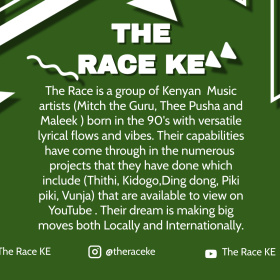MAUS’ Mark Stent talks about new SA airplay tracking tool
Last week’s introduction of radio-focused monitoring service Music Audit Usage System (MAUS) was welcomed by South African independent musicians and labels, who believe it will help them get their dues in terms of music royalties. The tool’s ability to report radio and TV airplay while calculating the royalties owed to musicians makes it the only digital platform of its kind in South Africa. More importantly, the service is expected to collect “every cent of royalties due” for local musicians.
 MAUS co-founder Mark Stent.
MAUS co-founder Mark Stent.
MAUS says it offers users a simple and transparent way for composers, artists, labels and publishers to closely monitor airplay of their songs and resulting revenues, allowing them to interrogate pay-outs from collective management organisations (CMOs). The service relies on British data company Radiomonitor to collect airplay information, then uses it to calculate royalties owed based on each radio station’s predetermined usage rate. MAUS offers three subscription tiers and does not take a cut from artists’ royalties.
Another important feature is the option to populate a song’s credits on splits sheets while uploading it for free before distribution. This minimises the possibility of tracking issues during the royalty collection process or risking unpaid royalties. Irregular and unpaid royalty collections due to inaccurate or missing metadata has been a challenge in the music industry for some time.
MAUS boasts a team of seasoned music pros, including DJ and mathematical statistician Mark Stent, Audlytics owner and Radiomonitor South Africa manager Jarrod Assenheim as well as Gresham Rights Management’s Andrew Mitchley and Larry Gresham. With the tool, which is quickly picking up steam, the execs are making a joint effort to tackle and resolve metadata and royalty collection woes in the South African music industry.
Music In Africa spoke to Stent to learn more about the new music auditing tool.
MUSIC IN AFRICA: Can you briefly tell us more about how MAUS works and the technology that it uses?
MARK STENT: We use fingerprint and detection technology from Radiomonitor SA, which is the industry standard in this format. We have a huge catalogue and monitor radio and TV 24 hours a day. Each song that’s detected is reported within the system and the correct revenue allocated according to each station’s usage rates, durations or spins. This is in line with the respective CMO, and the reporting is accurate and near real-time.
How precise is MAUS and can it track radio plays globally?
The reporting is highly accurate. Radiomonitor is a global leader in broadcast monitoring, reporting from 120 countries and thousands of the top radio stations globally. MAUS only reports on South African usage at this time, but we will be launching a new phase to expand to other territories in the coming months.
In terms of reporting data and insights, what are some of the differences between MAUS and analytics and royalty tracking services offered by digital service providers [DSPs]?
MAUS is the only platform that reports usage on radio. We also provide a free service that allows users to upload their tracks and assign the composer and publisher rights and associated metadata and then create splits agreements, which are then verified by each composer and signed digitally. This is not available on Spotify or other DSPs. This is an important part of the creative process. Artists can enter their metadata at source and ensure that it’s correct before it gets distributed, where it can get lost in the various stages due to loss of royalty income. They will also get one song to monitor at no cost.
When will MAUS start reporting data from music streaming platforms?
This is part of our roadmap and we intend to do so in the next 12 months. MAUS is limited to South Africa at the moment, but there are plans to expand beyond in the next calendar year.
How has South Africa reacted to the new tool and how many artists or representatives have signed up to the service?
There has been overwhelming support for the service from composers, publishers, labels and CMOs. We are signing up users on a daily basis and starting to grow quite rapidly after a very short time since launch. As with any new platform, awareness is key and for us to encourage composers to use the tools for better compliance. The entire global industry has a metadata problem and we aim to resolve that for them.
What advice can you offer artists about better managing and collecting their royalties?
Ensure that you have all your metadata completed and registered – artists and title names spelt correctly, composers details and splits agreed, and the correct labelling of the audio track. Once a song has been released, you can’t go back and change anything, so ensure it’s all 100% correct before doing so. Become a member of SAMRO, SAMPRA, CAPASSO and RiSA Audio Visual. It’s free to do so, and you will get your royalties.
Visit the MAUS website for more information.





























Comments
Log in or register to post comments